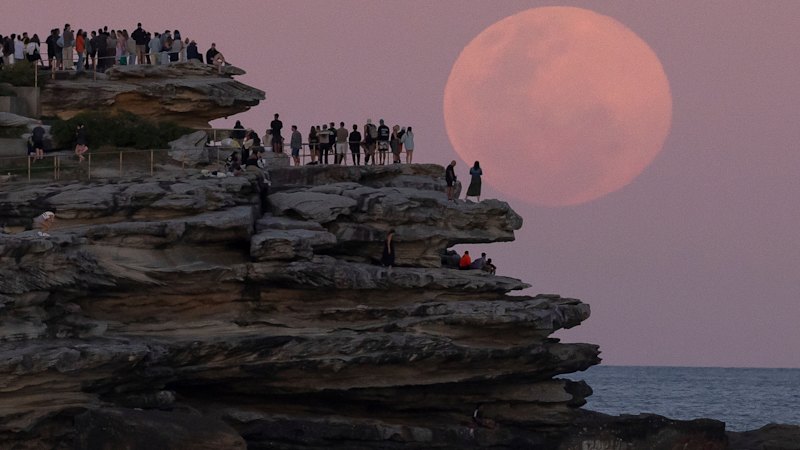The biggest and brightest moon of the year will rise on Wednesday evening, and the cosmic show will rely on an interplay between celestial orbits, physics and a quirk of the human brain.
November’s full moon is dubbed the “Beaver moon” and marks the time of year when the celestial body swings closest to Earth. It’s the second event in a run of three consecutive supermoons.
“Some people do think they’re going a little crazy sometimes when they look up and they see an exceptionally big full moon,” Swinburne University of Technology astrophysicist Sara Webb said.
Crowds gather at North Bondi’s Ben Buckler Point to watch the Beaver supermoon rise on Wednesday night. Credit: Sitthixay Ditthavong
“It’s most likely a super full moon, and it means that it’s just a little bit closer to the earth than normal, and they are really spectacular.”
The moon’s orbit is an oval, rather than a perfect circle, so there are times that it is closer to us and appears larger. Its furthest point from Earth is called the apogee, 405,500 kilometres away, according to NASA.
During its nearest point, the perigee, the moon is about 42,000 kilometres closer (a distance similar to the Earth’s circumference).
When the moon comes within at least 90 per cent of this perigee, it’s dubbed a supermoon.
Supermoons come in batches. The Beaver moon is the second in a run of three between October’s Harvest Supermoon and the third and final supermoon in December.
Read the full article here














